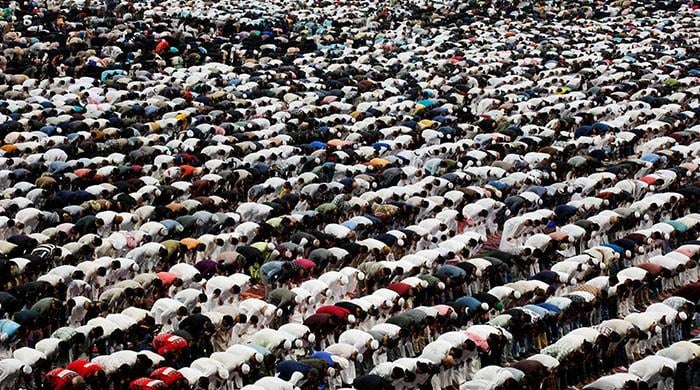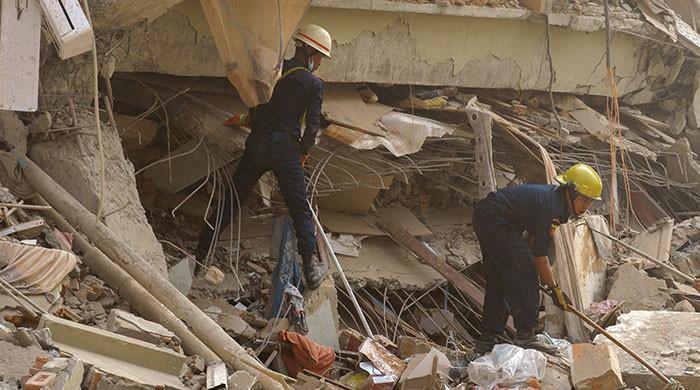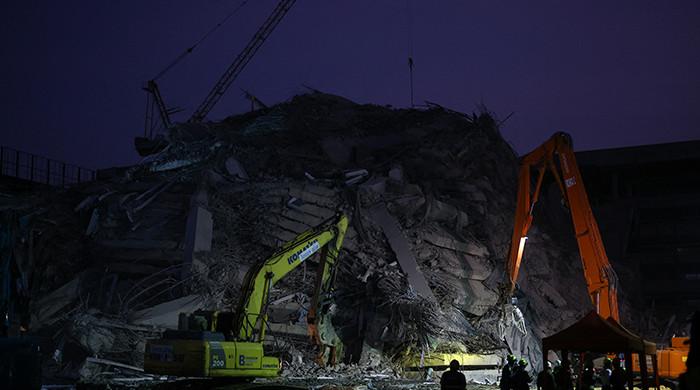Blight hits Afghan opium production: UN
UNITED NATIONS: A plant disease devastated Afghan opium production last year but Myanmar is seeing a worrying drug boom, the UN anti-narcotics agency warned Thursday.With the cocaine market in...
June 24, 2011
With the cocaine market in decline, Peru is now on a par with Colombia as the world's top coca producer, but the UN Office on Drugs and Crime (UNODC) expressed strong concern about a surge of so-called "synthetic" drugs from Southeast Asia.
UN Secretary General Ban Ki-moon said the World Drug Report 2011 painted a "sobering picture of the threat posed by illegal drugs," with 200,000 people dying each year from illegal drug use which remains a major financier of terrorism.
A plant "blight" in Afghanistan, which accounts for about two thirds of the global area under opium poppy cultivation, meant that world production declined by 38 percent to an estimated 4,860 tons, UNODC said.
Afghanistan still accounted for 3,600 tons of opium and UNODC executive director Yury Fedotov said "Afghan opium production will probably bounce back in 2011." Opium prices have tripled in the past year, according to UN estimates.
The agency said Myanmar has reemerged as a major heroin producer.
Cultivation in Myanmar rose by 20 percent in 2010 and with Afghanistan's decline, its share of global opium production has risen from five percent in 2007 to 12 percent last year, UNODC said.
The opium market is now said to be valued at more than $68 billion a year, with consumers paying an estimated $61 billion.
In Afghanistan, one gram of heroin costs less than four dollars, but UNODC estimated that consumers in west and central Europe pay $40-$100 per gram and in the United States and northern Europe $170-$200.
In Australia the price was estimated at $230-$370 per gram.
Despite the huge market value, UNODC estimated that Afghan farmers earned only $440 million from opium growing.
The UN agency said there was "soaring" production and trafficking of amphetamine-style synthetic drugs in Myanmar and the rest of Southeast Asia, notably the so-called Golden Triangle region where Laos, Myanmar and Thailand meet.
"The gains we have witnessed in the traditional drugs markets are being offset by a fashion for synthetic 'designer drugs' mimicking illegal substances," said Fedotov.
"The Golden Triangle is not just about opium anymore; it's a business that caters to consumers."
UNODC said Myanmar was a prime source of amphetamine pills seizures in Southeast Asia -- with the amount caught in raids rising by a third in 2009, to 15.8 tons.
Methamphetamine use is "sweeping across East Asia and has started to increase again in North America in 2009, following several years of decline," said UNODC.
The area under coca cultivation has declined by one third over the past decade. UNODC said there has been a significant fall in production in Colombia and small increases in Peru and Bolivia have not made up for this.
Peru and Colombia now each have about 62,000 hectares (150,000 acres) of coca plant under cultivation.
Cocaine consumption is falling in the United States, the biggest market, UNODC said. But it still got through an estimated 157 tons of the drug in 2009.
Europe is the second largest market with 123 tons. Its consumption has doubled over the past decade.
Market prices for cocaine have collapsed in recent years but the European market is now estimated at $33 billion per year just behind the US market on $37 billion.
The UN agency said that cannabis remains by far the number one produced and consumed illicit substance. It said Afghanistan is the world's largest supplier of cannabis resin, followed by Morocco which is the prime supplier for Europe.
UNODC said 200,000 people per year die from narcotics use, more than half from fatal overdoses.
It added that about 18 percent of injecting drug users, an estimated 2.8 million people around the world, have the HIV virus and more than half of injected drug users have Hepatitis C.
The UN leader said at the launch of the report: "Traffickers break more than the law, they break the human spirit. They fuel terrorism and insurgency."
Ban said drug users should not be blamed and called for greater international action against traffickers. (AFP)











